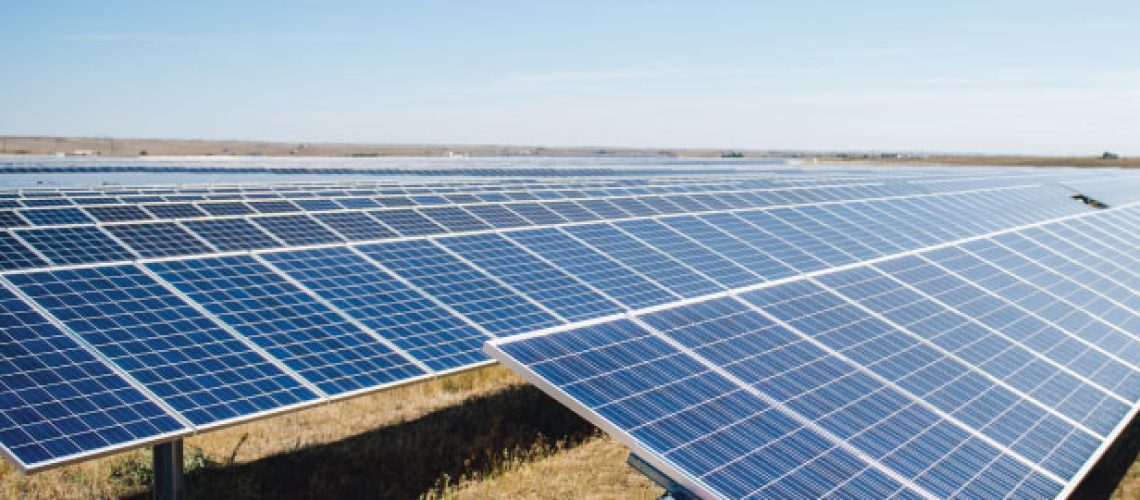A clunky tax credit system keeps vital incentives like the ITC and PTC from working the way Congress intended. Direct pay is the key to ensuring U.S. projects have efficient access to low cost capital with greater certainty by providing cash incentives directly to clean energy projects and project sponsors.
Many of us working in clean energy pushed hard for the game-changing Build Back Better package only to see it whittled down and finally stopped in its tracks. Though disappointed, we remain hopeful that a climate package can still gain consensus in Congress. And while other, more controversial proposals garner headlines, the biggest opportunity to create explosive growth in clean energy could come from a simple, cost-effective fix to the clean energy tax credit system.
Federal incentives for clean energy have already proven enormously successful; according to SEIA, the Investment Tax Credit (ITC) has driven 52% average annual growth in the solar industry since it was enacted in 2006. But a clunky tax credit system keeps vital incentives like the ITC and Production Tax Credit (PTC) from working the way Congress intended. Direct pay is the key to ensuring U.S. projects have efficient access to low cost capital with greater certainty by providing cash incentives directly to clean energy projects and project sponsors. Tax credit reform—including 100% direct pay alongside the expanded and extended ITC and PTC—will unleash capital for clean energy investment at a critical time.
Many clean energy project sponsors do not have enough tax liability to fully utilize the tax credits themselves, and instead rely on the tax equity market to monetize the value of those credits. But a chronic shortage of financing in the tax equity market lends uncertainty to those transactions, and big banks and Wall Street middlemen extract a significant portion of the credits’ value. Providing 100% direct pay will significantly expand the opportunity for businesses of all sizes—as well as non-profits and public utilities, who are unable to monetize the credits at all—to deploy renewable energy within their operations.
Perhaps most importantly, 100% direct pay will make renewable energy more accessible to businesses in disadvantaged and economically challenged communities. Today, many of these businesses are unable to deploy renewable energy despite the significant long-term economic and environmental benefits they could achieve, simply because they are too small to be considered for traditional tax equity financing.
Direct pay is a simple and straightforward fix to the problems that have plagued the efficient use of the PTC and ITC. The option would transform the industry’s current reliance on the surge and freeze cycle of tax equity financing. Right now, projects that are critically needed to meet America’s climate goals and create jobs face a minefield of uncertainty around financing. When tax cuts, recessions, or other shocks to the financing system happen, the availability of tax equity investment grinds to a halt, as do the clean energy investments that rely on that system.
To say this creates a major bottleneck in clean energy investment and deployment is an understatement. At a time when the opportunity for the energy transition is greatest, two thirds of wind projects set to begin construction this year are still seeking tax equity financing, along with more than half of large-scale solar projects. These delays hold America back from its potential as a global clean energy leader.
The people making the energy transition happen—from utility-scale wind and solar developers and forward-thinking utilities to clean energy financiers, large corporate power purchasers, and centrist and progressive policy think tanks—all agree that reforming the tax code to enable 100% direct pay is necessary to meet clean energy deployment goals. And the policy has strong support from voters of all political stripes: new polling from Data for Progress shows 74% of Americans are in favor, including 74% of Independents, 63% of Republicans, and 82% of Democrats. Perhaps it’s no coincidence that a rising tide of public officials, corporate leaders, and environmental groups are voicing their support for direct pay.
Making direct pay an option for current and emerging technologies—including energy storage— without the artificial constraints of the tax equity market would be one of the most transformative energy policies in decades, opening massive new opportunities for investment as well as new options for conventional loan underwriting and bond issuances for large projects. In fact, new research from the Rhodium Group finds the benefits of direct pay could be three to four times larger than its costs. This simple tax credit tweak could have a massive impact, adding up to as much as $1.5 trillion in economic surplus while eliminating more than 5 billion tons of planet-warming carbon pollution through 2050.
U.S. leadership of the clean energy transition depends on American entrepreneurship and innovation. Direct pay is the most concrete action that Congress can take to send a clear signal to investors that the energy revolution will happen here.
***
Jon Powers is the President and Co-founder, CleanCapital, which owns and operates over 200 solar projects across the U.S. In his role, Jon leads corporate strategy, operations, investor relations, and marketing. Prior to joining CleanCapital, Jon led public sector business development at Bloom Energy. His passion for clean energy stems from his time serving with the U.S. Army in Iraq, where he learned how vital clean energy is to protecting America’s national security. He helped to revolutionize the U.S. Army’s energy program, first as Special Adviser for Energy to the Assistant Secretary of the Army and later as Director of Outreach for the Army’s Energy Initiatives Task Force.



